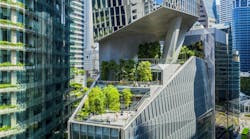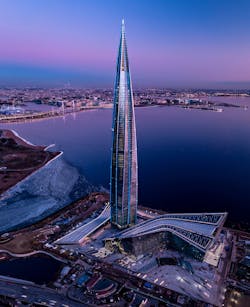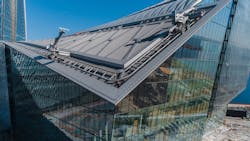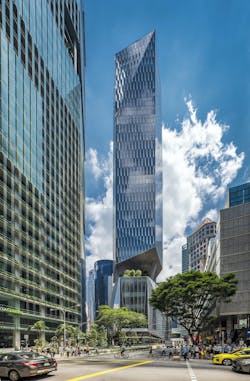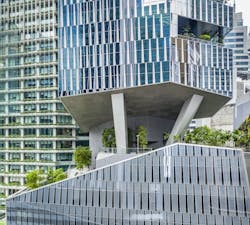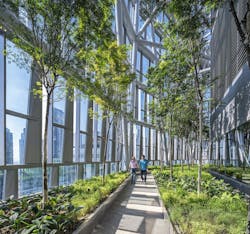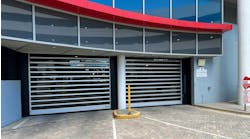Sustainability Plays a Key Role in Emporis Skyscraper Award’s Winning Buildings
Sustainable construction is becoming more important—and awarded—than ever. The global trend of green buildings continues to rise, which is evident in the 10 buildings that recently received the Emporis Skyscraper Award. The winning skyscrapers feature an abundance of unique architecture, including environmentally-friendly terraces, green roofs, noteworthy atriums and more.
Coming in first place is a high-rise in Russia, the Lakhta Center in St. Petersburg, which is the tallest building in Russia and Europe standing at a staggering 1,516 feet, and the 14th tallest in the world. The building has received LEED Platinum certification from the U.S. Green Building Council and is one of the five most environmentally friendly skyscrapers worldwide.
When choosing the Lakhta Center, designed by GORPROJECT and RMJM, the jury was impressed with its unusual form, according to an Emporis press release. The building’s exterior consists of five wings that rotate almost 90 degrees, giving the structure the shape of a blazing flame, which resembles the logo of Gazprom, the natural gas producer that has taken up its new headquarters inside the building.
The Lakhta Center was selected as the winning design by an international jury of experts who chose from over 700 skyscrapers completed in 2019 with a minimum height of 328 feet (100 meters). It was able to score points not only for its unique aesthetic, but its use of environmentally friendly and energy-efficient technologies as well. As the northernmost supertall skyscraper in the world, the Lakhta Center is exposed to extreme temperatures. A double skin facade prevents unnecessary heat loss and makes it extraordinarily energy efficient. In addition, thanks to the innovative use of infrared radiators, excess heat is not wasted but fed back into the system.
Featuring more sustainable design is a stunning 28-story retail and office tower in Singapore, 18 Robinson. The project has achieved a Greenmark Platinum rating, Singapore’s local equivalent to LEED, through the design of its planning, envelope and mechanical systems. Designed by New York-based architect, Kohn Pedersen Fox Associates (KPF), and architects61, the skyscraper changes its appearance depending on the viewing angle and is characterized by its green terraces.
The first seven stories of 18 Robinson create what KPF’s online project portfolio described as a “retail podium,” while the other 18 stories of office space extend above. Keeping with Singapore’s Landscape Replacement Area policy, the building offers publicly accessible green space that is equivalent to the site area. A lavish open-air garden creates a vivid break that stretches from the sixth to eighth floor. The use of green roofs has increased in years and has become a prime example of sustainable design—green roofs can help lower operating costs, contribute to credits for green building certifications and can become a lush amenity for tenants.
[Related: 4 Ways Your Roof Can Earn LEED Certification Credits]
Furthermore, 18 Robinson’s angled composition serves to increase access to natural light, mitigate direct views into adjacent towers and reflect light to create a gem-like beacon for Singapore, stated KPF’s portfolio. By staying on top of award-winning architecture trends, like the ones found in winning buildings from the Emporis Skyscraper Award, building owners can often find fresh ideas on how to better their structures and consider new ways of how to invest in a sustainable building model for 2021 and beyond.
Read Next: The Critical Relationship Between Buildings and Sustainability for the Future (IFMA 2020)
